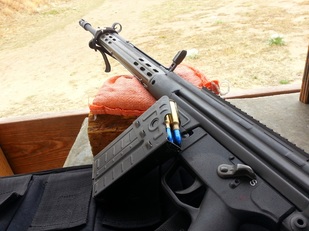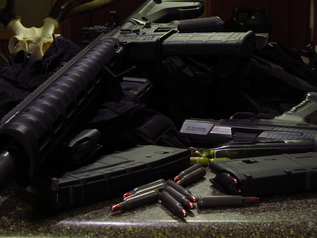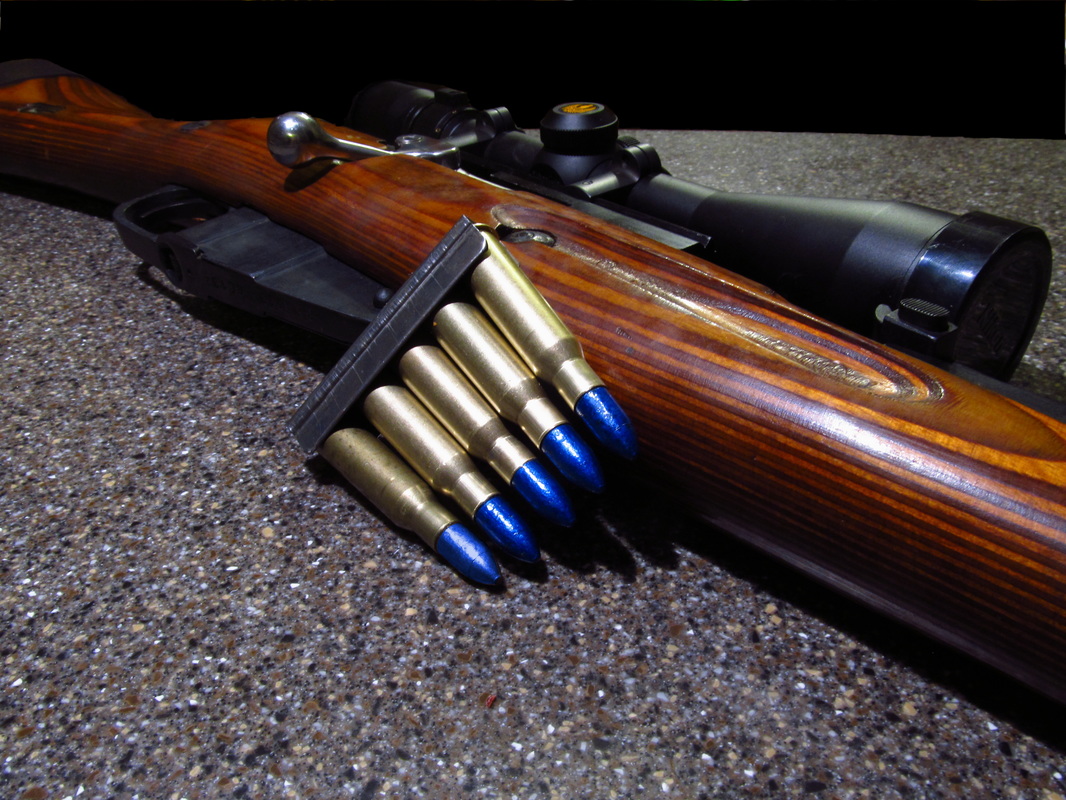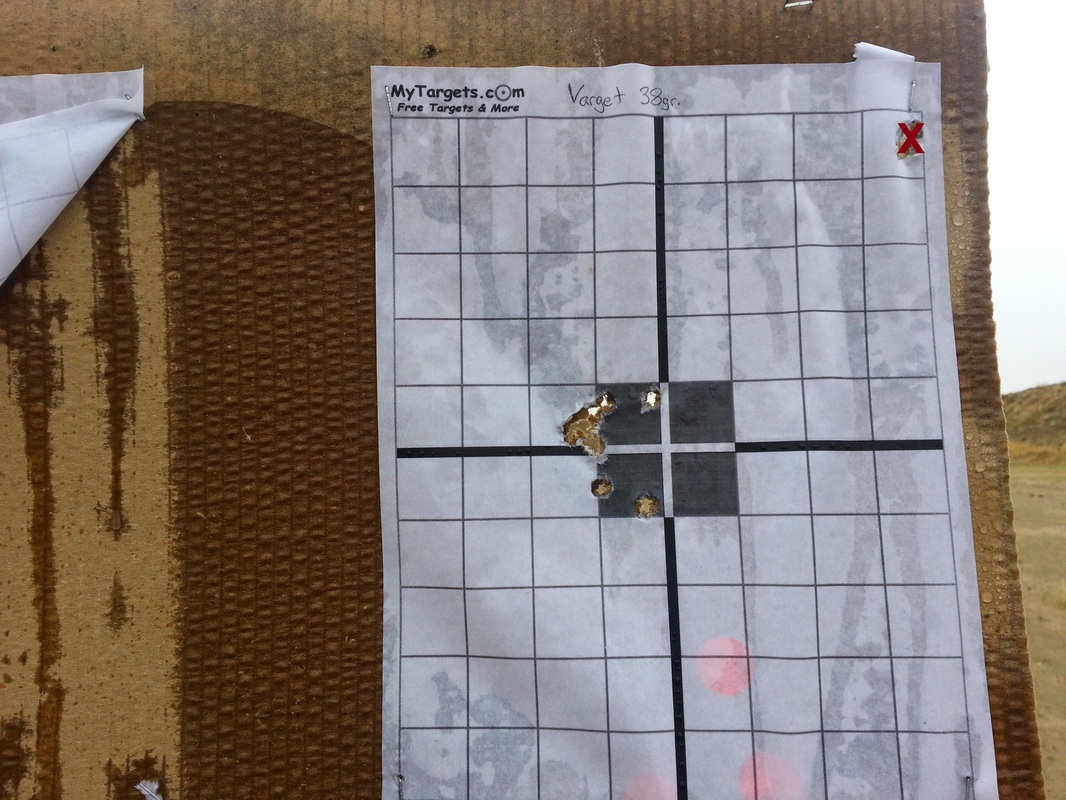
Designing a projectile which can be used successfully in a rifle has been a huge challenge, and the bullets have been in the works for some time now.
We've tested projectiles for several popular firearms and cartridges, from the AR-15 in .223/5.56 to the gamut of .30 caliber and .308/7.62x51 NATO rifles available.
Not only do we need to prevent leading of the bore and excessive smoking, but the projectiles need to be accurate at range. They also need to have all these characteristics, while operating at the high pressures needed to cycle a semi-automatic action. Shooting a bolt-action rifle simplifies things considerably, you can load them as slow or as fast as you'd like, and pick whichever load gives the best accuracy.
Several pieces of information became apparent during testing:
Because of #3, we began offering heavy .30 caliber bullets in the 200-220gr range. If the speed is capped at 2,300fps, the heavier bullets offer more momentum during flight, and easily generate enough pressure in the chamber and bore to cycle the action on a semi-automatic gun when using standard load data for a jacketed bullet.
The powders I've had the best luck with in this testing have been Varget and H4895, using data from an equivalent weight jacketed bullet, but sticking to the low end of charge weights. This range of powders appears to be in the burn-rate sweet spot, but of course finding a variety of powders to test with has been an ordeal for the last couple of years!
We've tested projectiles for several popular firearms and cartridges, from the AR-15 in .223/5.56 to the gamut of .30 caliber and .308/7.62x51 NATO rifles available.
Not only do we need to prevent leading of the bore and excessive smoking, but the projectiles need to be accurate at range. They also need to have all these characteristics, while operating at the high pressures needed to cycle a semi-automatic action. Shooting a bolt-action rifle simplifies things considerably, you can load them as slow or as fast as you'd like, and pick whichever load gives the best accuracy.
Several pieces of information became apparent during testing:
- The range of powders and charge weights that can be used with success is narrower than what can be used with jacketed bullets.
- The bullets can be fired at very high speeds (3,000+ fps) without leading, but the coating begins to smoke A LOT when they are pushed this fast.
- The top speed at which these projectiles yield the best accuracy is between 2,000 and 2,300 fps. This seems to be the "sweet spot."
Because of #3, we began offering heavy .30 caliber bullets in the 200-220gr range. If the speed is capped at 2,300fps, the heavier bullets offer more momentum during flight, and easily generate enough pressure in the chamber and bore to cycle the action on a semi-automatic gun when using standard load data for a jacketed bullet.
The powders I've had the best luck with in this testing have been Varget and H4895, using data from an equivalent weight jacketed bullet, but sticking to the low end of charge weights. This range of powders appears to be in the burn-rate sweet spot, but of course finding a variety of powders to test with has been an ordeal for the last couple of years!
I'm no expert rifle shooter, but the best load (so far!) with our polymer coated bullets groups well enough that I feel 100% confident using it for short-mid range targets in a 3-gun match. I'm sure that once more shooters begin adopting these bullets and fine-tuning their pet loads, we'll see some incredibly accurate shooting!
The load that shoots best out of my PTR-91 (a .308 / 7.62x51 NATO cartridge) is as follows:
Unsorted, once-fired LC 7.62x51 brass.
Brass trimmed to minimum SAAMI spec
Neck expanded using Lyman Neck Expander (M-Die)
CCI Large Rifle Primers
Varget: 38.0 gr.
EM 200gr. Polycoated Bullet, sized to .311" (http://www.egglestonmunitions.com/rifle.html)
C.O.A.L of 2.775"
The load has gentle recoil compared to factory NATO ammo, gives 100% reliable feeding and ejection, and groups well.
This might be a good starting point for other folks looking to start developing their own loads!
The load that shoots best out of my PTR-91 (a .308 / 7.62x51 NATO cartridge) is as follows:
Unsorted, once-fired LC 7.62x51 brass.
Brass trimmed to minimum SAAMI spec
Neck expanded using Lyman Neck Expander (M-Die)
CCI Large Rifle Primers
Varget: 38.0 gr.
EM 200gr. Polycoated Bullet, sized to .311" (http://www.egglestonmunitions.com/rifle.html)
C.O.A.L of 2.775"
The load has gentle recoil compared to factory NATO ammo, gives 100% reliable feeding and ejection, and groups well.
This might be a good starting point for other folks looking to start developing their own loads!




 RSS Feed
RSS Feed